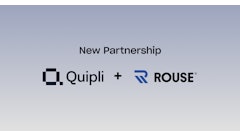
This article is the third in a three-part series. For part 1, check out the October-November 2020 issue of Rental. For part 2, check out the January/February 2021 issue of Rental.
How to Create Content that Ranks on Google
There are over 4 million blogs posted every single day. So, how do you write content that Google considers worthy of a top spot?
1. Content Quality: Become the Expert
Google’s 2020 updates have put an emphasis on E.A.T. (Expertise, Authoritativeness, and Trustworthiness). E.A.T. is what Google looks at as its measure of quality. Content quality includes both the material of the content and the experience that readers have with the content. Here is a breakdown of the primary factors that go into Google’s assessment of your content quality and experience.
Content Depth
The depth of your content is determined by a few things. First, it’s been found that longer posts have a higher probability of ranking in the top three than shorter posts, and that the sweet spot for a long-form article is around 2,000 words. A long post does not mean it’s higher quality though. Google looks at how comprehensive the piece of content is. So, the more you cover about a single topic in your post, the higher likelihood you have of ranking for that keyword.
 Backlinko
Backlinko
Content Uniqueness
Content has to be unique in order for it to rank. Google has become very good at detecting duplicate content. You may be surprised by their definition of duplicate content:
- Copied content: Any completely copy and pasted content will be de-indexed.
- URL variations: URL variations of a single URL is considered duplicate, which you see often times with product pages i.e. equipment.com/scissor-lifts is a duplicate of equipment.com/scissor-lifts?gs1930 if the content is largely the same.
- Multiple versions: If you have two versions of your site for www.equipmentcompany.com and equipmentcompany.com, you have essentially duplicated your whole website.
- Boilerplate text: Any boilerplate text that you have copied on several pages is considered duplicate.
- Thin content: Thin content, or pages with very little content, is often considered duplicate content.
- Careful with syndicated content: Be careful syndicating your content on other sites. As long as your content is originally posted on your own web property and the syndicated content has a link back to your original article, you will be considered the original author.
- Duplicate meta content: Meta titles and descriptions are the text that sits in the HTML behind the page to steer Google in the right direction as to what your page is about. Duplicate meta titles and descriptions will trigger a duplicate content warning, and you will risk a hit to your ranking.
Content Freshness
Google has had several patents for quantifying a content freshness score, which is a leading indicator of their efforts towards measuring content freshness. The fresher the content, generally the higher the ranking. Freshness is based on:
- Creation date: The date that the content was published.
- Changes: The number of changes to the site, the amount of change, the recentness of those changes, and how important the change is all play into content freshness.
- New Pages: The number of new pages added to a site over time, such as adding a new post to your blog, plays a factor.
- Engagement: Interaction from your audience, i.e. the number of comments, signal content quality and freshness.
Content Readability
The reader’s experience with your content is an important aspect of your content’s quality. Content is considered more readable when it contains:
- Bulleted and numbered lists, i.e. 11 Reasons Why the Construction Industry Needs Ecommerce
- Images and multimedia – Take pictures of your jobsites and with customers to have a library to pull from
- Proper grammar and spelling
- Proper spacing – No more five-paragraph essays!
- A table of contents
Google often rewards content that uses lists, images, and tables of content with featured snippets on their search results page.
2. Content Relevance: Own the Topic
Google’s priority is to surface the highest quality content that is also the most relevant resource for any given keyword. You can help steer Google in the right direction in determining what topic is most relevant for your content with the following optimizations.
Keyword Density
Keyword density is in reference to the number of places your target keyword appears in your content. It is NOT strictly in reference to the number of times your target keyword appears. Google got wise to tricks, such as keyword stuffing, that injected the target keyword countless times behind the scenes to trick Google into thinking the content was rich with the target keyword. There are a number of places where you want your target keyword to appear:
- Your title and title tag
- In your header and H1 tags
- In the first 100 characters of your content
- Throughout the body of the content
- Semantically related keywords should be throughout
- In the URL for your content
- In the meta title and description
Dwell Time vs. Bounce Rate
Dwell time is a measure of how long someone spends on your page on average before leaving it. Bounce rate is the percent of people that come to your page and leave it without clicking to other pages. A common misconception is that a high bounce rate is always bad; however, a high bounce rate is only bad when coupled with a short dwell time.
A high-quality article, for instance, will likely have a high bounce rate but a long dwell time because the reader Googled for a topic, found your article, stayed long enough to read it, and left without clicking elsewhere. Therefore, the combination of the two are important to look at, and dwell time ultimately wins when it comes to content relevance.
There are several factors that can lead to a low dwell time and high bounce rate:
- Your content is written about an irrelevant topic to the keyword you ranked for.
- Your site speed is slow, causing the reader to lose patience and leave.
- The user experience of your content is poor, causing the reader to have a bad first impression and bounce.
- Your content is low quality.
- Pogosticking, or when the customer frequently clicks your result, backs out to the search results page, and clicks to the next result down. This signals to Google that your content is not as beneficial as the content ranked below yours.
3. Content Linking: Build Authority
One of the most important SEO concepts is building your domain authority through content linking. In general, the more your piece of content is linked to both internally and externally, the more it signals to Google that your piece of content is high quality and the higher all of your pages will rank. A rising (domain authority) tide will lift all (content) boats. The types of links that help signal to Google that your content is worthy of a number one ranking are as follows:
Backlinks
A backlink refers to an instance where a third-party site uses your piece of content as a reference and links to your piece of page.
 Backlinko
Backlinko
Backlinks are SEO gold, but not all backlinks are created equal:
- High-authority backlinks: The higher the domain authority of the referring website, the greater the impact that backlink will have on your ranking. The more high-authority backlinks from sites like ForConstructionPros, the better.
- Keyword in anchor text: Anchor text is the word or phrase that is hyperlinked to your content. If the anchor text contains the keyword that your content is targeting, then that backlink carries more weight than irrelevant anchor text. For example, if I had an amazing piece of content on boom lifts, but the website linking to my site is using the anchor text peanut butter and jelly, it will be a less valuable backlink.
- Links from PR: Content about your company on high-authority news sites or industry publications are a great way to earn high-quality backlinks.
- Directory links: There are multiple ways to quickly get backlinks through paid services, directories, and listing sites. Although these help, they are lower quality backlinks and not weighed as heavily.
- Guest contributions: Contributing content to other publications as a guest contributor is a great way to earn backlinks.
- Nofollow vs. Dofollow: Nofollow and dofollow are tags in the HTML of the page that tell Google whether to ignore the link or not. If you earn a backlink, be sure it does not have a nofollow tag, otherwise it will not count towards your ranking.
There is no better way to accumulate high-authority backlinks than to consistently write high-quality, relevant content that is 10 times better than anything else on the internet.
Internal Links
This is where your content web comes into play. Although not as powerful as backlinks from third-party sites, internal links to and from your own content on your website help build your domain authority. Your internal linking structure should mimic your content web in a way, with your most important pieces of content acting as nodes of the content web. All content related to one of your pillars should be internally linked back to that one piece of pillar content. Any boost in ranking that the leaves of your web get will pass that authority back up the branches to your pillar content. This concept is important for pages beyond a blog.
It is imperative for suppliers to write killer content on their product category pages because all product pages within a category link back to that category page by way of the breadcrumbs typically found on an ecommerce site. This gives your category pages a great chance of ranking. For example, Home Depot does a great job of adding content to their category pages for their more competitive keywords like “fasteners.” All of the product pages under the fasteners category are linked back to the category page by way of the breadcrumbs.
 Example from Home Depot of rich content on a product category page.
Example from Home Depot of rich content on a product category page.
You will notice that Home Depot comes up second behind Fastenal. The description you see in the search result comes from the "About Fasteners" section and the links come from the subcategory links they included on the page. A well-designed, shallow internal linking structure is a critical technical SEO component to get right for an ecommerce-enabled company.
Outbound Links
Outbound links refer to the links that you give to third parties when referencing their content in your writing. Google assumes that a well-researched, in-depth piece of content will include references to external sources, so it is thought that Google will favor content that includes these external references. High authority outbound links could include references to government agencies like OSHA or studies conducted by consultants like McKinsey. However, you do not want to overdo it as that can have an adverse effect.
High-Ranking Content Creation Recap
Google’s job is to surface the most relevant content with the highest level of expertise, authoritativeness, and trustworthiness for any search on the internet. In order to create content that ranks on Google:
- Become the expert: Create high-quality content that is in-depth, unique, and fresh while giving the reader the best experience while they read your content.
- Own your topic: Create high-quality content that is highly relevant to your core customer, and therefore, your target keywords.
- Build authority: Earn high-quality backlinks with your content and purposefully link your content together to continuously lift your domain authority.
I have seen far too many companies get addicted to paid methods of acquiring website traffic. The problem with paid traffic is that as soon as the money valve turns off, traffic goes with it. This can kill a business. A killer rental marketing strategy can be done without a dime of paid advertising. I hope this guide inspires you to become a content-focused, digitally enabled business so you can win on Google.
The reason we created Gearflow is because we also know how hard this is to do on your own. Every construction equipment or parts supplier should have the means to be an ecommerce-enabled business. We’re working hard to make that possible.
This article was adapted from its original version, “The Ultimate Guide to Construction Marketing,” on the Gearflow.com blog with permission from the author.



















